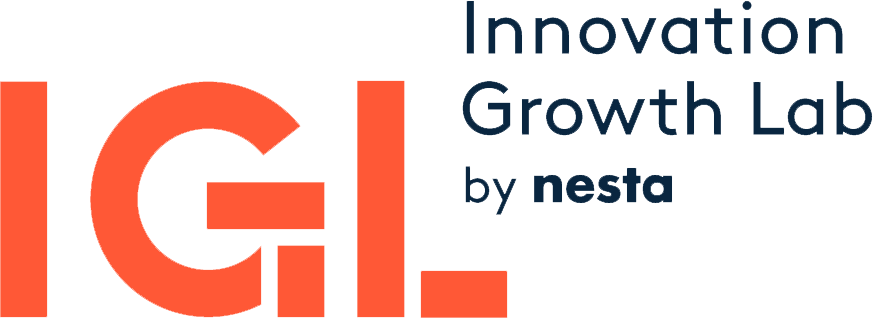
A few months ago, I read this blog post by Radha Rajkotia who had recently joined Innovations for Poverty Action as its Chief Research and Policy Officer. In that piece, Radha spoke about some of the things she thought we probably didn’t know about the organisation - and things she wasn’t aware of before joining. Many of those, if not all, really resonated with me. So I thought I’d give it a go and share the things I didn’t know about IGL before joining, now that I have spent a little over a year here. One of the first conclusions - time flies!
Having lived in Washington DC for more than 8 years, working at the World Bank and the Inter-American Development Bank, walking into the Nesta offices was like entering a new world. An open space, full of colour, packed desks, young folk and, as it turned out, many of the faces behind the names of the blogs and toolkits I had been quoting and working with in my previous jobs. And, something that was not different from my previous jobs, (but could be a bit of a surprise for a UK-based charity) staff were actually very international. Nesta’s People team have told me that figures show over a third are non-UK staff.
IGL is no exception. In fact, our share of internationals is even higher. Being a team of only ten people we bring together six different nationalities. And while it didn't take me too long to figure that out, over the course of the last year there were many other things I discovered about IGL and the work that we do… Here are my top five:
-
Our work goes way beyond RCTs
While randomised controlled trials (RCTs) are at the heart of our work and is a key expertise that distinguishes us from others working on innovation policy, IGL is about much more than that. We help governments gradually move from a traditional approach to policymaking, which is generally about launching a large programme with one single design and the hope that it will work, to a more experimental culture which embraces learning through small trials and systematic decisions about what to bring to scale. And this is anything but a linear process.
A lot of our work starts with in-depth conversations and exploratory workshops to help us understand the context of our government partners, the priorities they have and the challenges they may face. Making this a priority is key to deciding how, where and when to experiment. At Nesta we see experimentation as a continuum, which comprises a number of possible evaluation methodologies and fosters a dynamic process to find, develop and test new ideas. Methods can only be chosen once there is a very clear understanding of the characteristics of the programme, as well as the circumstances under which it is implemented. To reflect these complexities, we are increasingly making our way to the beginning of the continuum, helping governments explore how to use approaches like design thinking for early stage prototyping in the context of higher uncertainty.
-
Producing and disseminating good evidence is not enough
Despite the fast changing technological and economic context that innovation policy operates in, the last decades have seen very few innovative approaches and new ideas.
Given how little these programmes have changed in the past, and the high amount of public funding going into them, it is particularly surprising that almost none of these programmes have ever been rigorously evaluated. In consequence, this means that there is extremely little credible evidence on their effectiveness. So the call for better evidence makes sense. But then, as many point out, even the most robust evidence is not enough to promote change and, as we found out through a survey conducted in 2015, the (actual and perceived) barriers are extremely broad.
Policy experimentation is a dynamic process that covers everything from developing to ultimately implementing new ideas, and this often requires a fundamental organisational mindset shift that cannot be driven by one individual champion. We work with policymakers and practitioners at different levels, increasing awareness of the value of policy experimentation, providing new insights and skills, but also resources and access to our broad networks of academics and other governments. Policy experimentation is a journey, and IGL as a global initiative brings together like-minded policymakers to embark on it together.
-
Often our advice is about what governments should try, not about what necessarily works
In line with the above, IGL will not necessarily give governments the perfect plan to make their innovation and growth policies more impactful, but we can certainly help identify ideas that are worth exploring. Given my ties (and I guess emotional connection) with the region, quickly after I joined I started taking up conversations with policymakers in Latin America and the Caribbean, and one of the first push backs that I would often get was “very nice, but what works in Denmark just won’t work here”. Point taken, but at the same time this is also not what we advocate for. Context-specificity is definitely an important issue when it comes to experiments (for those more into the jargon - “external validity” is the magic word here). However, when there is evidence that something works elsewhere and you want to try out something new, that may still be a good lead and IGL supports governments in exploring ideas of how those could be tested. So, as an analogy to the UK’s What Works Centres, our colleague James coined IGL as a “What You Should Try Centre” that nicely captures what we are about.
-
Policy experimentation can actually help de-risk the process of policymaking
The aim of innovation policy is to support innovation and experimentation with new products, services or business models. Yet, paradoxically, innovation policy itself is neither innovative nor experimental. This is particularly worrisome in a context where things are evolving and changing at a pace that is hard to catch up with. Becoming more agile and exploring new ideas to emerging new challenges seems to be more important than ever. Despite this, the first reaction when speaking about policy experimentation is that many perceive it being too risky and therefore shy away, worried about the negative consequences in the case of failure. But think again. Policy experiments can actually help de-risk the process of exploring new policy ideas and changes. By starting small and testing effectiveness early, experiments can make it easier to sample novel approaches and venture into more innovative fields, without having to commit large amounts of resources in the process and stopping ineffective schemes much easier.
The question is where to find novel ideas that can help design new approaches. And more often than not the answers cannot be found in government buildings, but come from the outside - from practitioners, academics and other actors that are normally not involved in the policymaking process. In the last few years we have been looking at different tools to promote this sort of “idea crowdsourcing” and helped set up and run the UK’s Business Basics Programme (BBP) and the EU’s INNOSUP-6 to open up the process of idea generation. These funds support trials of a number of different interventions, instead of focusing on one, with particular attention paid to gathering evidence which would support scaling-up of those that produce promising results.
-
Our work is about supporting individual governments, but also about convening and connecting
Countries have very diverse innovation ecosystems, each with their own strengths and weaknesses, so it doesn't come as a surprise that governments adopt different strategies to promote innovation. What was more surprising for me though, is that by talking and working with many different countries, I increasingly realised that countries still have a lot in common and therefore a lot to learn from each other. Back in 2019, IGL’s Director, Albert and myself conducted a small consultation exercise to understand what policymakers around the globe were currently working on and what their priorities were for the future. From Chile to Australia and Denmark, issues such as SME technology adoption, inclusive innovation and co-creation, alongside business-university collaboration and technology transfer and now increasingly mission-oriented innovation policy, were on almost everybody’s radar. Although, of course, the context in each of these countries is very different, once you start looking into the details of programmes and policies, there are many more commonalities than you might expect.
This is where IGL can be a helpful convener and connector. While we work with individual governments, we also bring together our government partners to learn from each other and explore common interests and ideas. Beyond the direct IGL partner network we also hope to create an international community of policy makers, practitioners and researchers who are at the forefront of the experimentation movement. These actors don’t necessarily speak the same language, but have more shared interests than we may think. And while a lot of this happens on helpful online platforms and in our virtual IGL partner working groups, in a digital era, creating a physical event is still very impactful when it comes to making new connections and stirring exciting conversations.
To create a space for this community to grow, we have been organising our annual Global Conference and the next one is just around the door. Join us in London from 2-4 June. It’s a place to discover the latest trends at the cutting-edge of experimental innovation policymaking, expand your networks and gain a new perspective on how you could use experimentation to improve your work.
